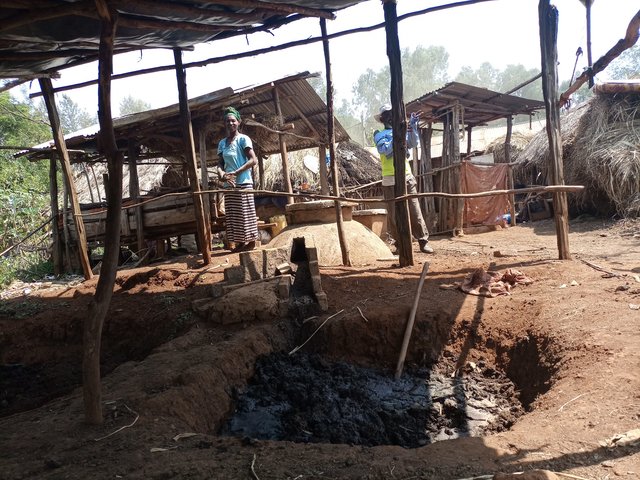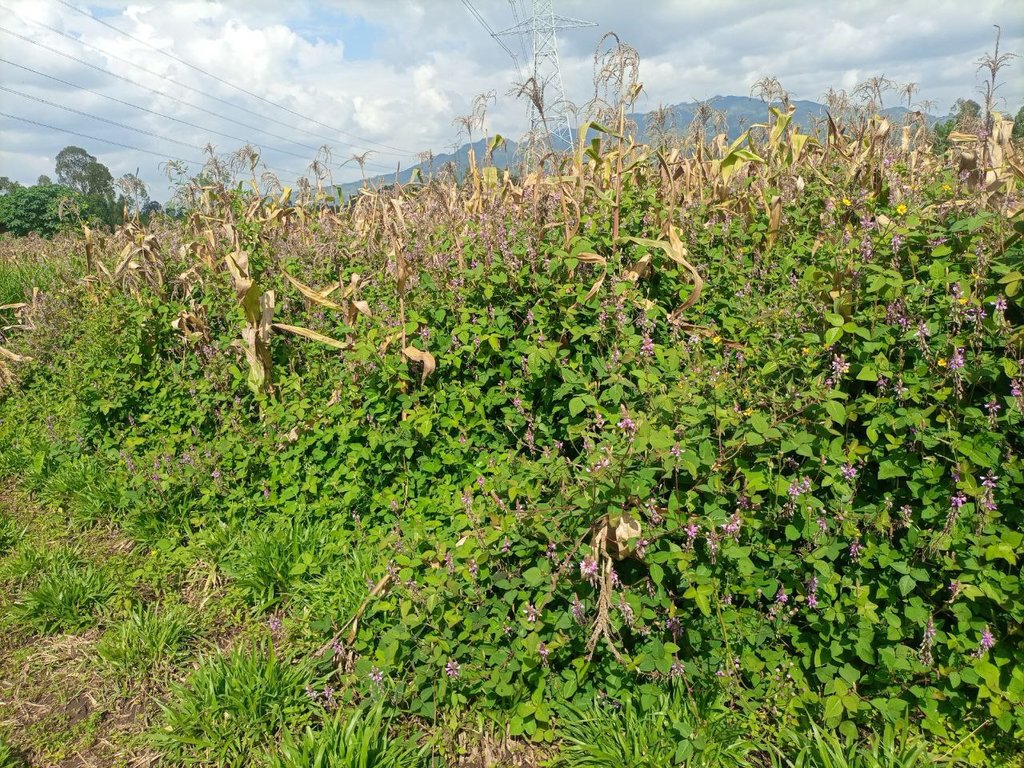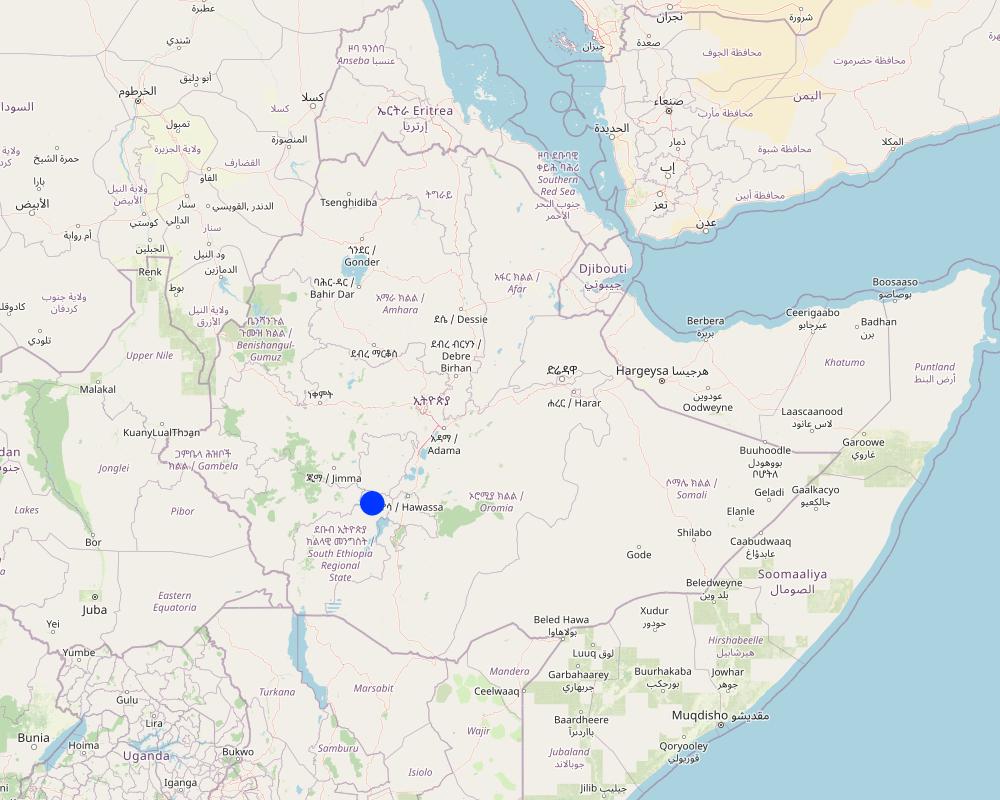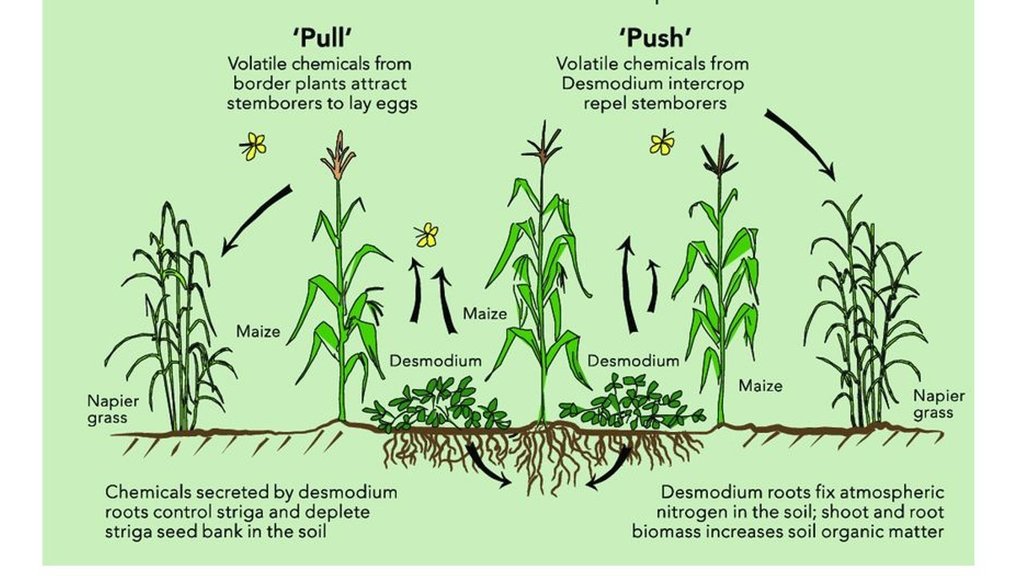Cover crops [Ethiopia]
- Creation:
- Update:
- Compiler: GERBA LETA
- Editors: Julia Doldt, Kidist Yilma, Noel Templer, Tabitha Nekesa, Ahmadou Gaye, Siagbé Golli
- Reviewers: William Critchley, Rima Mekdaschi Studer, Sally Bunning
Yeshifan Sebil (in Amharic)
technologies_6628 - Ethiopia
View sections
Expand all Collapse all1. General information
1.2 Contact details of resource persons and institutions involved in the assessment and documentation of the Technology
Key resource person(s)
land user:
Falaha Fanaye
Farmer
Ethiopia
Name of project which facilitated the documentation/ evaluation of the Technology (if relevant)
Soil protection and rehabilitation for food security (ProSo(i)l)Name of the institution(s) which facilitated the documentation/ evaluation of the Technology (if relevant)
Alliance Bioversity and International Center for Tropical Agriculture (Alliance Bioversity-CIAT) - Kenya1.3 Conditions regarding the use of data documented through WOCAT
The compiler and key resource person(s) accept the conditions regarding the use of data documented through WOCAT:
Yes
1.4 Declaration on sustainability of the described Technology
Is the Technology described here problematic with regard to land degradation, so that it cannot be declared a sustainable land management technology?
No
Comments:
With good management, a legume known as desmodium is a very good cover crop that can be integrated into perennial and annual crops. It improves soil fertility, repels insects and caters feed to the livestock.
1.5 Reference to Questionnaire(s) on SLM Approaches (documented using WOCAT)

Integrated Soil Fertility Management (ISFM) [Ethiopia]
The Integrated Soil Fertility Management (ISFM) approach has been adopted under the Integrated Soil Fertility Management Project (ISFM+). It was introduced as a quick-win solution to increase both crop and biomass production through the incremental promotion of varied but complementary technology packages.
- Compiler: GERBA LETA
2. Description of the SLM Technology
2.1 Short description of the Technology
Definition of the Technology:
Cover crops are crops grown on bare, fallow farmland or under a main crop to cover and conserve the soil by protecting it from exposure to the sun, wind, and direct impact of rain. It fixes nitrogen (if a legume), improves soil fertility, supplies livestock fodder, and helps manage both pests and weeds.
2.2 Detailed description of the Technology
Description:
Cover crops are planted to conserve the soil on bare, fallow farmland or under a main crop. They can be grown on their own or between rows of annual and perennial crops such as maize, coffee, and fruits. The main purposes of growing cover crops are to cover the soil with low-growing vegetation, protect the soil from exposure to sun and rain, suppress weeds, improve soil fertility, supply livestock feed, and manage insect pests. Cover crops may be nitrogen fixing (if legumes), and they make productive use of spaces between crop rows, as well as controlling wind and water erosion. They also have the potential to restore soil fertility and help in climate change adaptation, as well as sequestration of atmospheric carbon above and below soil surface. Furthermore, cover crops can be fed to livestock, helping to bridge periods of shortage of feed when grazing lands are not available – which is an increasing problem because of growing population pressure and expansion of croplands. Land users give huge credit for its role as a pesticide by deterring armyworm and stalk borer when used as a border, and stopping their advance into the maize crop.
Desmodium is an example of a leguminous cover crop, improving soil fertility via fixing atmospheric nitrogen, increasing infiltration and productive use of soil moisture, and catering for livestock via a “cut-and-carry” fodder system. Desmodium is planted between rows of maize crops as well as between grass hedgerows around the farm. For its establishment, access to desmodium seed is essential. Once established, it remains to serve as a permanent source of planting material. Nevertheless, there are some disadvantages of desmodium: seed collection is difficult, it may trap honey bees and it can compete with the crop for light and space if allowed to grow too tall. Thus, efficient management of desmodium is essential. Nevertheless, as part of an agro-ecological intervention, cover crops like desmodium deliver multiple benefits to resource-poor farmers and can be viewed as an investment in improving soil fertility as well as soil health. Overall, cover crops improve productivity, and help ensure yield stability and contribute to a healthier ecosystem.
2.3 Photos of the Technology
General remarks regarding photos:
The photo portrays the location where desmodium and other grass species mutually play distinct but complementary push-pull roles of attracting and repelling insect pests from infesting the main crop past the visible hedgerows.
2.4 Videos of the Technology
Comments, short description:
Videos of this technology is not taken.
2.5 Country/ region/ locations where the Technology has been applied and which are covered by this assessment
Country:
Ethiopia
Region/ State/ Province:
SNNPR
Further specification of location:
Kuto Sorfela kebele, Sodo Zuria
Specify the spread of the Technology:
- evenly spread over an area
If precise area is not known, indicate approximate area covered:
- < 0.1 km2 (10 ha)
Is/are the technology site(s) located in a permanently protected area?
No
Comments:
The land user is a member of the the ISFM+ implementing farmers group and recently evolved to the Agro ecology since the kebele is an agroecology site.
Map
×2.6 Date of implementation
Indicate year of implementation:
2022
2.7 Introduction of the Technology
Specify how the Technology was introduced:
- through projects/ external interventions
Comments (type of project, etc.):
The cover cropping practice has introduced via ISFM+ farmers group.
3. Classification of the SLM Technology
3.1 Main purpose(s) of the Technology
- improve production
- reduce, prevent, restore land degradation
- conserve ecosystem
- create beneficial economic impact
- create beneficial social impact
3.2 Current land use type(s) where the Technology is applied
Land use mixed within the same land unit:
Yes

Cropland
- Annual cropping
Annual cropping - Specify crops:
- cereals - maize
- Desmodium
Annual cropping system:
Maize/sorghum/millet intercropped with legume
Number of growing seasons per year:
- 2
Specify:
Belg (short rain) when maize is planted and Meher (long rain) when other crops are planted.
Is intercropping practiced?
Yes
If yes, specify which crops are intercropped:
Desmodium/haricot beans is intercropped with maize.
Is crop rotation practiced?
Yes
If yes, specify:
Cereal crops such as maize/tef is rotated with root crops such as sweet potatoes/taro or the legume crops such as haricot beans.
3.3 Has land use changed due to the implementation of the Technology?
Has land use changed due to the implementation of the Technology?
- No (Continue with question 3.4)
3.4 Water supply
Water supply for the land on which the Technology is applied:
- rainfed
3.5 SLM group to which the Technology belongs
- integrated crop-livestock management
- integrated soil fertility management
- integrated pest and disease management (incl. organic agriculture)
3.6 SLM measures comprising the Technology

agronomic measures
- A2: Organic matter/ soil fertility

vegetative measures
- V2: Grasses and perennial herbaceous plants

structural measures
- S4: Level ditches, pits

management measures
- M2: Change of management/ intensity level
3.7 Main types of land degradation addressed by the Technology

soil erosion by water
- Wt: loss of topsoil/ surface erosion

chemical soil deterioration
- Cn: fertility decline and reduced organic matter content (not caused by erosion)

physical soil deterioration
- Pc: compaction
3.8 Prevention, reduction, or restoration of land degradation
Specify the goal of the Technology with regard to land degradation:
- reduce land degradation
- restore/ rehabilitate severely degraded land
4. Technical specifications, implementation activities, inputs, and costs
4.1 Technical drawing of the Technology
Technical specifications (related to technical drawing):
Desmodium and the grass (Brachiaria species) serving as push-pull technology to the pest. Adopted from https://www.linkedin.com/pulse/desmodium-legume-cover-crop-solution-food-insecurity-africa-ndiritu/. In this particular case, Brachiaria play the "pull" function on the periphery of the maize farm.
Author:
Africa Sustainable Agriculture Biweekly Newsletter, ICIPE Push Pull Project
4.2 General information regarding the calculation of inputs and costs
Specify how costs and inputs were calculated:
- per Technology area
Indicate size and area unit:
Timad = 0.25 ha
If using a local area unit, indicate conversion factor to one hectare (e.g. 1 ha = 2.47 acres): 1 ha =:
1 ha = 4 Timad
other/ national currency (specify):
ETB
If relevant, indicate exchange rate from USD to local currency (e.g. 1 USD = 79.9 Brazilian Real): 1 USD =:
53.6283
Indicate average wage cost of hired labour per day:
250
4.3 Establishment activities
Comments:
We believed to address only the maintenance costs of desmodium as it demands only seeds, skills, and knowledge as compared to the other SLM technologies.
4.4 Costs and inputs needed for establishment
Comments:
We jumped to the following session as maintenance cost is rather decisive for the cover crops.
4.5 Maintenance/ recurrent activities
| Activity | Timing/ frequency | |
|---|---|---|
| 1. | Land preparation and planting | Before and at planting |
| 2. | Cutting desmodium to use as feed for cattle | During the growing season |
| 3. | Harvesting desmodium biomass and /or seed | At harvest maturity |
| 4. | Access to planting materials, if newly started | Anytime in the offseason |
4.6 Costs and inputs needed for maintenance/ recurrent activities (per year)
| Specify input | Unit | Quantity | Costs per Unit | Total costs per input | % of costs borne by land users | |
|---|---|---|---|---|---|---|
| Labour | Land preparation | PDs | 4.0 | 500.0 | 2000.0 | 100.0 |
| Labour | Cutting for use as feed | PDs | 8.0 | 250.0 | 2000.0 | 100.0 |
| Labour | Harvesting total biomass and /or seed | PDs | 5.0 | 250.0 | 1250.0 | 100.0 |
| Plant material | Desmodium seed | kg | 3.0 | 120.0 | 360.0 | |
| Total costs for maintenance of the Technology | 5610.0 | |||||
| Total costs for maintenance of the Technology in USD | 104.61 | |||||
If land user bore less than 100% of costs, indicate who covered the remaining costs:
Agroecology/ Integrated Soil Fertility Management Project (ISFM+)
Comments:
Prices of agricultural inputs are frequently changing in Ethiopia.
4.7 Most important factors affecting the costs
Describe the most determinate factors affecting the costs:
The prevailing economic crisis and rising of inflation in the country contributes to inputs and other services price uncertainty.
5. Natural and human environment
5.1 Climate
Annual rainfall
- < 250 mm
- 251-500 mm
- 501-750 mm
- 751-1,000 mm
- 1,001-1,500 mm
- 1,501-2,000 mm
- 2,001-3,000 mm
- 3,001-4,000 mm
- > 4,000 mm
Specifications/ comments on rainfall:
Rainfall distribution is uniform except in El Nino cases or recurrent drought experienced in the country and the region.
Agro-climatic zone
- sub-humid
5.2 Topography
Slopes on average:
- flat (0-2%)
- gentle (3-5%)
- moderate (6-10%)
- rolling (11-15%)
- hilly (16-30%)
- steep (31-60%)
- very steep (>60%)
Landforms:
- plateau/plains
- ridges
- mountain slopes
- hill slopes
- footslopes
- valley floors
Altitudinal zone:
- 0-100 m a.s.l.
- 101-500 m a.s.l.
- 501-1,000 m a.s.l.
- 1,001-1,500 m a.s.l.
- 1,501-2,000 m a.s.l.
- 2,001-2,500 m a.s.l.
- 2,501-3,000 m a.s.l.
- 3,001-4,000 m a.s.l.
- > 4,000 m a.s.l.
Indicate if the Technology is specifically applied in:
- not relevant
Comments and further specifications on topography:
The visited farmland lay on gentle slope and less vulnerable to the effects of erosion.
5.3 Soils
Soil depth on average:
- very shallow (0-20 cm)
- shallow (21-50 cm)
- moderately deep (51-80 cm)
- deep (81-120 cm)
- very deep (> 120 cm)
Soil texture (topsoil):
- fine/ heavy (clay)
Soil texture (> 20 cm below surface):
- fine/ heavy (clay)
Topsoil organic matter:
- medium (1-3%)
If available, attach full soil description or specify the available information, e.g. soil type, soil PH/ acidity, Cation Exchange Capacity, nitrogen, salinity etc.
Not available.
5.4 Water availability and quality
Ground water table:
5-50 m
Availability of surface water:
excess
Water quality (untreated):
for agricultural use only (irrigation)
Water quality refers to:
ground water
Is water salinity a problem?
No
Is flooding of the area occurring?
Yes
Regularity:
episodically
Comments and further specifications on water quality and quantity:
Seldom, when heavy rainfall is intercepted, there is a flood event.
5.5 Biodiversity
Species diversity:
- high
Habitat diversity:
- low
Comments and further specifications on biodiversity:
The farming system in the area features the best agroecology practices with diverse agrobiodiversity. The type of crops grown in the area ranges from root crops (such as sweet potato, cassava, and yam), cereals (teff and maize), to perennial crops: coffee, fruits and enset.
5.6 Characteristics of land users applying the Technology
Sedentary or nomadic:
- Sedentary
Market orientation of production system:
- mixed (subsistence/ commercial)
Off-farm income:
- less than 10% of all income
Relative level of wealth:
- rich
Individuals or groups:
- individual/ household
Level of mechanization:
- animal traction
Gender:
- women
Age of land users:
- middle-aged
Indicate other relevant characteristics of the land users:
In addition to crop production, the land user engaged in off-farm activities such as making local liquor to support her family's livelihoods. Furthermore, the land user adopted diverse ISFM technologies such as biogas/bio slurry and vermicomposting.
5.7 Average area of land used by land users applying the Technology
- < 0.5 ha
- 0.5-1 ha
- 1-2 ha
- 2-5 ha
- 5-15 ha
- 15-50 ha
- 50-100 ha
- 100-500 ha
- 500-1,000 ha
- 1,000-10,000 ha
- > 10,000 ha
Is this considered small-, medium- or large-scale (referring to local context)?
- large-scale
Comments:
As compared to the local people, the adoption and implementation of diverse agricultural activities and the size of the farm put the land user on a relatively larger scale.
5.8 Land ownership, land use rights, and water use rights
Land ownership:
- state
- individual, not titled
Land use rights:
- individual
Water use rights:
- open access (unorganized)
- individual
Are land use rights based on a traditional legal system?
Yes
Specify:
The farmland was inherited from the predecessors.
Comments:
Parts of the land used by the user are leased in from the other land owners.
5.9 Access to services and infrastructure
health:
- poor
- moderate
- good
education:
- poor
- moderate
- good
technical assistance:
- poor
- moderate
- good
employment (e.g. off-farm):
- poor
- moderate
- good
markets:
- poor
- moderate
- good
energy:
- poor
- moderate
- good
roads and transport:
- poor
- moderate
- good
drinking water and sanitation:
- poor
- moderate
- good
financial services:
- poor
- moderate
- good
Comments:
The land user accessed electricity in rural areas. She also used biogas for energy production.
6. Impacts and concluding statements
6.1 On-site impacts the Technology has shown
Socio-economic impacts
Production
crop production
Comments/ specify:
Increase with proper management of the companion crops on a gradual basis.
crop quality
Comments/ specify:
Simultaneously increase with good harvest per unit of land as the integration allows to combat against pests.
fodder production
Comments/ specify:
Desmodium gives high biomass production. So it supplies more fodder if timely trimmed and supplied to the livestock.
fodder quality
Comments/ specify:
Believed to increase with the application of appropriate management practices.
animal production
land management
Comments/ specify:
Desmodium fixes atmospheric nitrogen that improves the fertility of the soil in addition to the production of large biomass that supplies organic matter to the soil.
Water availability and quality
drinking water availability
Income and costs
expenses on agricultural inputs
Comments/ specify:
Slightly decrease as desmodium fix atmospheric nitrogen in the long run and partly complements urea fertilizer.
farm income
workload
Comments/ specify:
It demands follow-up and frequently monitors and manages the growth of desmodium to reduce its competition with the main crops.
Socio-cultural impacts
food security/ self-sufficiency
SLM/ land degradation knowledge
Comments/ specify:
As it creates evidence-based learning, it improves land user's SLM knowledge.
Ecological impacts
Water cycle/ runoff
water quantity
surface runoff
Comments/ specify:
High biomass production and the ground covering traits of desmodium assist to slow down surface runoff and promote infiltration deep into the soil.
Soil
soil moisture
soil cover
soil loss
soil crusting/ sealing
nutrient cycling/ recharge
Comments/ specify:
As the companion crop fixes atmospheric nitrogen, it improves nutrient cycling.
Biodiversity: vegetation, animals
Vegetation cover
biomass/ above ground C
pest/ disease control
Comments/ specify:
Land users suggested the pesticidal role of desmodium as compared to the hidden contribution to the improvement of soil fertility through its natural traits of fixing atmospheric nitrogen.
Climate and disaster risk reduction
flood impacts
emission of carbon and greenhouse gases
Comments/ specify:
It increases biomass production that absorbs carbon above and below the surface of the soil.
6.2 Off-site impacts the Technology has shown
water availability
Comments/ specify:
Contributes to groundwater recharge by reducing surface runoff.
reliable and stable stream flows in dry season
Comments/ specify:
Facts are not available to complement this allegation since the implementation is on smaller areas of farmland.
downstream flooding
Comments/ specify:
It breaks the speed of flood that overflow and damage neighboring areas.
6.3 Exposure and sensitivity of the Technology to gradual climate change and climate-related extremes/ disasters (as perceived by land users)
Gradual climate change
Gradual climate change
| Season | increase or decrease | How does the Technology cope with it? | |
|---|---|---|---|
| seasonal temperature | dry season | increase | not known |
Climate-related extremes (disasters)
Climatological disasters
| How does the Technology cope with it? | |
|---|---|
| heatwave | not known |
Other climate-related consequences
Other climate-related consequences
| How does the Technology cope with it? | |
|---|---|
| extended growing period | very well |
| reduced growing period | not well |
6.4 Cost-benefit analysis
How do the benefits compare with the establishment costs (from land users’ perspective)?
Short-term returns:
positive
Long-term returns:
very positive
How do the benefits compare with the maintenance/ recurrent costs (from land users' perspective)?
Short-term returns:
positive
Long-term returns:
very positive
Comments:
The benefit from desmodium can be made in the short term. Its high biomass production to enrich grass fodder and suppression of weeds and pests are promptly seen as compared to some other SLM technologies.
6.5 Adoption of the Technology
- 1-10%
Of all those who have adopted the Technology, how many did so spontaneously, i.e. without receiving any material incentives/ payments?
- 0-10%
6.6 Adaptation
Has the Technology been modified recently to adapt to changing conditions?
No
6.7 Strengths/ advantages/ opportunities of the Technology
| Strengths/ advantages/ opportunities in the land user’s view |
|---|
| The technology improves soil fertility. |
| It manages insect pests and stops their advance and negative consequence they might causes on the main crops. |
| Supply protein-rich feed to the animals. |
| Strengths/ advantages/ opportunities in the compiler’s or other key resource person’s view |
|---|
| Cover crops provide multiple benefits to the family farmers such as the best uses of land between the rows of maize crops. |
| It smothers weeds and improves soil fertility and crop productivity which have a positive contribution to the livelihoods of family farmers. |
| Cover crops and the practice itself have a beneficial role in agroecology intervention and improvement of the ecosystem functioning. |
6.8 Weaknesses/ disadvantages/ risks of the Technology and ways of overcoming them
| Weaknesses/ disadvantages/ risks in the land user’s view | How can they be overcome? |
|---|---|
| Fast growing and overwhelming the main crops (competition for space). | Applying intensive management such as cutting and feeding to the animals. |
| Feeding the animals with fresh harvest is not friendly to the livestock. | As it is a protein-rich fodder crop the harvest must be slightly dry and mixed with grass fodder that reduces the adverse effects of either bloating or diarrhea. |
| Weaknesses/ disadvantages/ risks in the compiler’s or other key resource person’s view | How can they be overcome? |
|---|---|
| Difficulty to manage and harvesting desmodium seeds. |
1. Intensify the management of desmodium and reduce harvesting inconvenience on main crop. 2. Replace desmodium with other farmer's friendly legume species such as Dolichos lablab...as cover crops. |
| Hooky nature of the seed that sticks to the clothes. |
-Wear nylon wears/clothes that reduces the effects of hooky seeds. - Produce seeds on separate plots. |
| Quick growth and climbing traits that dominate the main crops. | - Apply intensive management and use the above-ground parts as fodder for the livestock by adopting cut-and-carry feeding system. Also, needs to keep the green parts under frequent management practices. |
7. References and links
7.1 Methods/ sources of information
- field visits, field surveys
4 people
- interviews with land users
1
- interviews with SLM specialists/ experts
3
7.2 References to available publications
Title, author, year, ISBN:
Cover Crops for Sustainable Crop Rotations. Clark, Andy. 2015
Available from where? Costs?
https://www.sare.org/resources/cover-crops/
7.3 Links to relevant online information
Title/ description:
Greenleaf desmodium. A Fact sheet index describing about the cover crop
URL:
https://keys.lucidcentral.org/keys/v3/pastures/Html/Greenleaf_desmodium.htm
7.4 General comments
The questionnaire is wide. Also, it requires many data sources including the sketching of the technical application of the technology, video graphic description, etc., which seems ambitious to be addressed by an expert.
Links and modules
Expand all Collapse allLinks

Integrated Soil Fertility Management (ISFM) [Ethiopia]
The Integrated Soil Fertility Management (ISFM) approach has been adopted under the Integrated Soil Fertility Management Project (ISFM+). It was introduced as a quick-win solution to increase both crop and biomass production through the incremental promotion of varied but complementary technology packages.
- Compiler: GERBA LETA
Modules
No modules






